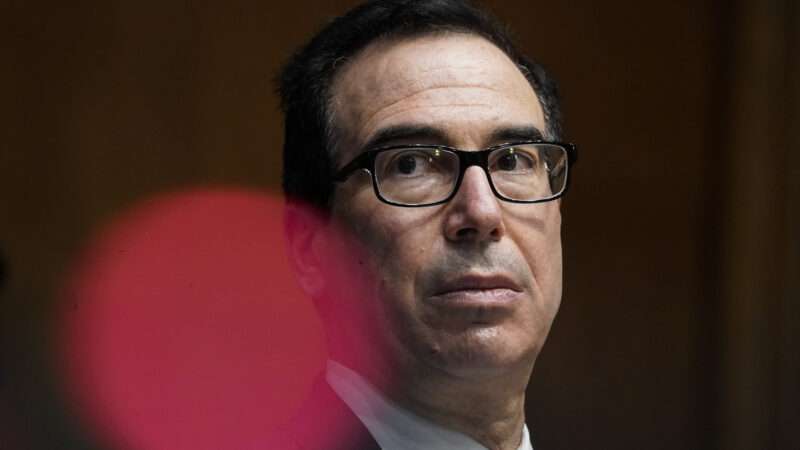
In September 2020, as the pandemic dragged into its sixth month, Republicans on Congress’ Select Subcommittee on the Coronavirus Crisis released a report on the rollout of the Paycheck Protection Program (PPP).
The program was among the most expensive of the pandemic relief measures passed in 2020, eventually growing to some $800 billion, making it among the most expensive government programs of 2020—nearly equivalent to the size of the American Recovery and Relief Act (ARRA), the 2009 stimulus package passed under President Barack Obama. Even apart from the rest of the pandemic relief spending, it was, all on its own, a massive economic rescue program.
The GOP report described the PPP as “a forgivable loan program designed to provide a direct incentive for small businesses to keep their workers on the payroll.” In other words, it was intended to save the jobs of ordinary workers, and the report—essentially an extended brag sheet—insisted that it had done precisely that, crediting then-President Donald Trump for its accomplishments. “The program’s focus on getting money to workers quickly saved millions of jobs and kept the economy from collapse,” the report concluded. One section is titled “President Trump’s Swift Action Provided Relief.”
Democrats on the subcommittee argued that the program, which had passed with bipartisan support, needed more oversight, but credited it with helping “millions of small businesses and non-profit organizations stay afloat during the coronavirus crisis.” Then-Treasury Secretary Steve Mnuchin repeatedly defended the program to the media and Congress. The GOP report title introduces the PPP as a “Resounding Success.”
A more accurate description would have been “Expensive Failure.”
A recent study of the program’s effects from the National Bureau of Economic Research (NBER) finds that the majority of the funds spent by the program went to business owners and shareholders rather than to workers themselves. Ultimately, “only 23 to 34 percent of the program’s funds went directly to workers who would have otherwise lost their jobs.” The jobs it did keep in place were preserved at very high cost—somewhere between $170,000 and $257,000 a year, far more than the typical earnings of affected workers, which are closer to $58,000 per year.
While the PPP was able to save some jobs, albeit, at a very high cost, the overall result of the program was precisely the opposite of what was intended. The purpose of the program was to preserve the jobs of wage workers, not to funnel money to business owners. As David Autor, a Massachusetts Institute of Technology economist and the lead researcher behind the paper, told The New York Times recently, “it turns out [the money] didn’t primarily go to workers who would have lost jobs. It went to business owners and their shareholders and their creditors.” The program, he added, was “highly regressive.”
The authors suggest several reasons for the program’s unintended results. It was designed in haste at the beginning of the pandemic when many—including lawmakers and policymakers—believed that it would be a relatively short affair, and the economy would fully bounce back by summer. Initially, the PPP promised loan refundability to businesses that kept workers on their payrolls for eight weeks, essentially converting those loans into grants. But, as the pandemic dragged on and the program was topped up with additional funds, the requirements slipped, and the PPP eventually turned into something more like an all-purpose federally funded slush fund for small business owners.
The PPP was poorly designed and produced poor results accordingly. While it’s useful to analyze and learn from the flaws of a program like this, I’m not sure that the proper response is to just try to design better programs in the future.
There were a variety of reasons for the poor design of the program, but in the end, it all boils down to a single, unsolvable problem: No one, especially lawmakers in Congress, truly understood how the pandemic would unfold in real-time and what its effect on the economy would be. So the PPP, along with the rest of the COVID-era relief programs, was cobbled together in a slapdash manner based on partisan agendas, poor projections, incomplete information, and wishful thinking.
That’s simply not the recipe for well-designed relief programs, which is why the Obama-era stimulus package suffered from many of the same sort of flaws and failures. Rapidly constructed massive emergency relief programs are always going to be subject to these sorts of pressures and likely to result in these sorts of failures.
That’s not a cause for policy nihilism. Instead, it’s a reason for policy makers to act with greater caution and humility, especially in the face of a novel emergency. Rather than throwing money at poorly constructed mega-programs like the PPP and ARRA, smaller, more targeted programs—like Operation Warp Speed, which was probably the biggest success of the pandemic but cost just a few billion dollars—are much more likely to result in something that resembles a resounding success.
The post The Federal Government's Pandemic Jobs Program Was a Resounding Failure appeared first on Reason.com.
from Latest https://ift.tt/zYqxjDR
via IFTTT